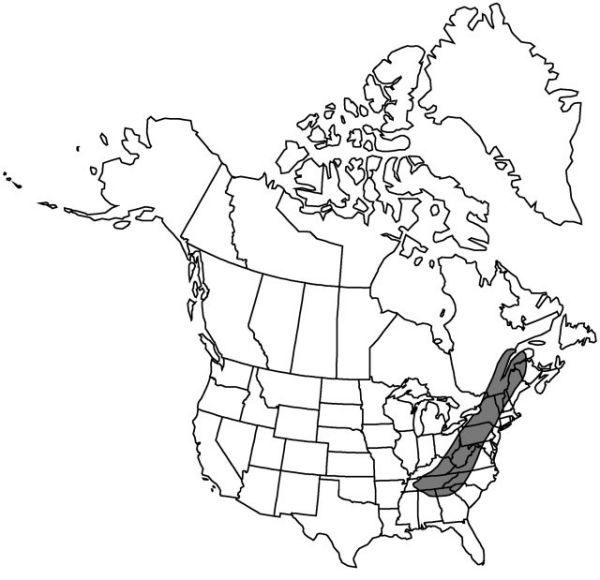Smilax herbacea
Sp. Pl. 2: 1030. 1753.
Vines. Stems annual, climbing, branching, to 2.5 m, herbaceous, glabrous; prickles absent. Leaves: petiole thin, 1–6 cm; tendrils numerous, long, functional; blade oblong-ovate, ovate, or round, 4.5–12 × 3–9 cm, glabrous abaxially, base cordate to truncate, margins entire, apex obtuse to acute; proximal cauline leaves narrower and smaller. Umbels many, axillary to leaves, 20–100+-flowered, globose; peduncle to 30 cm, progressively shorter distally. Flowers: perianth greenish, carrion-scented; tepals 3.5–4.5 mm; anthers much shorter than filaments; ovules (1–) 2 per locule; pedicel 0.5–2 cm. Berries blue, subglobose, ca. 10 mm diam., glaucous. 2n = 26.
Phenology: Flowering May–Jun.
Habitat: Higher elevations in rich woods, alluvial thickets, and meadows, often in calcareous soils
Elevation: 100–800 m
Distribution

N.B., Ont., Que., Ala., Ga., Ky., Maine, Md., Mass., N.H., N.Y., N.C., Ohio, Pa., S.C., Tenn., Vt., Va., W.Va.
Discussion
The leaves and habit of Smilax herbacea are quite variable.
Selected References
None.
Lower Taxa
"thin" is not a number.